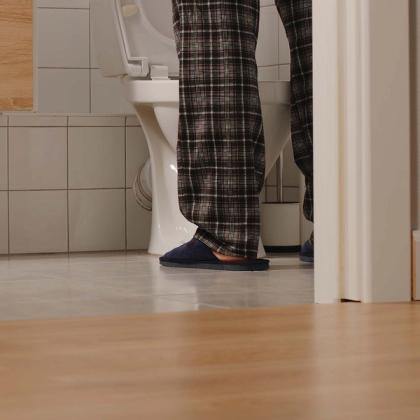This podcast episode is worth 0.29 CPD credits. Upgrade to Pro
Lower urinary tract symptoms (LUTS) are storage, voiding and post-micturition symptoms affecting the lower urinary tract. LUTS can significantly reduce men's quality of life and may point to serious problems in the urogenital tract. The pathogenesis of LUTS is multifactorial and can include one or several diagnoses, commonly benign prostatic obstruction, nocturnal polyuria (polynocturia) and detrusor muscle instability. LUTS are common and not necessarily a reason for suspecting prostate cancer. In this episode, Dr Roger Henderson gives an overview of male LUTS, including investigations, referral criteria and treatment options.
Key take-home points
- Around 30% of men over the age of 65 suffer from potentially troublesome LUTS.
- The prevalence of symptoms increases from a few per cent in men aged under 45 to more than half of men in their 60s and then to nearly 80% of men over the age of 80.
- LUTS are typically categorised into three groups: storage symptoms, voiding symptoms and post-micturition symptoms.
- Most men with LUTS experience a mixture of storage and voiding complaints, and the degree of symptom severity does not always correspond to the anatomical extent of disease.
- Many men delay seeking medical advice due to embarrassment, misunderstanding the cause or assuming these symptoms are an inevitable consequence of ageing.
- While benign prostatic hyperplasia remains the most common and widely recognised aetiology, it is not the only contributing factor.
- It is possible for men with small prostates to experience very significant LUTS and for those with large prostates to remain largely asymptomatic.
- Bladder dysfunction also plays a central role in many cases.
- In some patients, LUTS may arise primarily from detrusor underactivity, a condition that is often difficult to diagnose and treat, as it frequently overlaps with symptoms of obstruction.
- A medical history should explore the duration, severity and progression of symptoms, as well as their impact on daily life and sleep. Inquiring into the patient’s fluid intake, voiding habits, medications, past urologic history and sexual function is also required.
- A bladder diary – where the patient records the timing and volume of fluid intake and urination over several days – can be helpful, particularly in cases of nocturia or polyuria.
- Physical examination should always include a digital rectal exam to assess prostate size, consistency and tenderness. In some cases, signs of neurological impairment may be present and these should be evaluated as a matter of some urgency.
- In complex or refractory cases, urodynamic studies may be required to differentiate between obstruction and detrusor dysfunction.
- Treatment of LUTS in men should always be personalised and take into account symptom severity, patient preference, prostate size, any risk of progression and the presence of complications.
- When symptoms are more pronounced or bothersome, first-line drug treatment is typically alpha-1 adrenergic receptor antagonists.
- Refer for specialist assessment if there are lower urinary tract symptoms that do not respond to conservative management or drug treatment, if they are complicated by recurrent or persistent urinary tract infections, if there is stress urinary incontinence or if there is renal impairment due to lower urinary tract dysfunction.
- Urgent referral criteria include acute retention, possible malignancy, visible haematuria and culture-negative dysuria.
- Surgical intervention should only be considered when conservative treatment and medical therapy have failed, or if complications such as recurrent urinary retention, haematuria, bladder stones or infections develop.
Key references
- NICE. 2015. https://www.nice.org.uk/guidance/cg97.
- EAU. 2024. https://uroweb.org/guidelines/management-of-non-neurogenic-male-luts.
- NICE. 2025. https://www.nice.org.uk/guidance/NG12/.
- Zhang AY, Xu X. SAGE Open Nurs. 2018;4:2377960818811773. doi: 10.1177/2377960818811773.
- Sandhu JS, et al. J Urol. 2024;211(1):11-19. doi: 10.1097/JU.0000000000003698.
Create an account to add page annotations
Annotations allow you to add information to this page that would be handy to have on hand during a consultation. E.g. a website or number. This information will always show when you visit this page.
